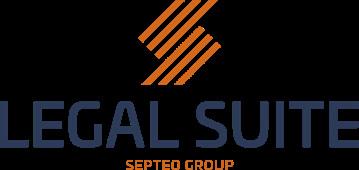
ISSUU.COM/TODAYSGC $199 SUBSCRIPTION RATE PER YEAR ISSN: 2326-5000 JULY/AUGUST 2023 VOLUME 20/NUMBER 5 TODAYSGENERALCOUNSEL.COM How to Avoid D&O Denials Defining Unfair Competition Legal Ops and the Coming Downturn Book Review: Business and Commercial Litigation in Federal Courts An Innovative Approach to Discovery Positioning the Legal Department as an Organization Leader










adr.org | +1.800.778.7879 ©2022 American Arbitration Association, Inc. All rights reserved. EXPERTISE Matters.
By Steven Molo and Lauren Dayton
COLUMN/THE ANTITRUST LITIGATOR
16 Unfair Competition Under Section 5 of the FTC Act
Will courts support enforcement beyond Sherman and Clayton Acts?
By Jeffery M. Cross
FEATURE S
18 The Cheshire Cat and Insurance Carriers

Insurers sometimes vanish, leaving only a grin and an unpaid claim.
By Adam K. Gallagher
20 Find Facts Faster
Reviewing and analyzing unstructured data.
By Julian Ackert
Chris DeConti
3 JULY/AUGUST 2023 TODAYSGENERALCOUNSEL.COM contents JULY/AUGUST 2023 Volume 20/Number 5 4 Editor’s Desk INTERVIEW 8 Baptiste Armaignac of Legal Suite The benefits of implementing a new intake process. LITIGATION 11 Book Review: Business and Commercial Litigation in Federal Courts A comprehensive and authoritative text.
LEGAL OPERATIONS 14 Downturn Could Catalyze Welcome Change for In-House Counsel Do more for less quicker.
18
By
On June 13th, inflation data showed that prices rose less than expected in May, but economists are still split on whether a downturn in the economy is inevitable. In this issue of Today’s General Counsel, Chris DeConti suggests that in-house departments would be forced to make some overdue changes if there is a downturn, which might be a good thing. Legal teams that are already overstretched and understaffed would face demands to do more work and do it quicker, but according to DeConti, they can thrive nevertheless. The challenge is to develop efficiencies that allow them to do complex legal work at scale, while still dealing with complex advisory matters in a way that aligns with their company’s business goals.
Jeff Cross writes that the FTC’s proposed ban on non-compete agreements is indicative of Chair Lina Khan’s focus on competition enforcement, and her reliance on Section 5 of the FTC Act, which prohibits unfair competition in or affecting commerce. How to deal with the problems that routinely arise when your company needs to collect on its D&O insurance is the topic of Adam Gallagher’s article, and Steve Molo and Lauren Dayton review Business and Commercial Litigation in Federal Courts, edited by our board member Robert L. Haig.
Bob Nienhouse, Editor-In-Chief bnienhouse@TodaysGC.com


4 TODAYSGENERALCOUNSEL.COM JULY/AUGUST 2023 BACK TO CONTENTS
EDITOR’S DESK
Answers in minutes, not months with Document Intelligence
Empower your in-house team to reduce external spend on document review and provide accurate guidance sooner. With Thomson Reuters Document Intelligence, gain immediate insights into contracts with AI pretrained by Practical Law attorney editors.
50% faster information retrieval and review
<1 minute to pinpoint critical provisions across thousands of documents
3 clicks to discover risks and revenue
optimizations
Mitigate risk, seize opportunities, increase productivity, and identify savings.
?
?
?
Scan QR code to learn more about Thomson Reuters Document Intelligence.
EDITOR-IN-CHIEF
Robert Nienhouse
EXECUTIVE EDITOR
Bruce Rubenstein SENIOR EDITOR
Barbara Camm FEATURES EDITOR
CHIEF OPERATING OFFICER
Stephen Lincoln
DIGITAL EDITOR
Catherine Lindsey Nienhouse
CONTRIBUTING EDITORS AND WRITERS
Julian Ackert
Baptiste Armaignac
Jeffery M. Cross
Lauren Dayton
Chris DeConti
Adam K. Gallagher
Steven Molo
SUBSCRIPTION Subscription rate per year: $199
For subscription requests, email subscriptions@todaysgc.com
REPRINTS
For reprint requests, email Lisa Payne: lpayne@mossbergco.com Mossberg & Company Inc.
Jim Gill EDITOR
MANAGING DIRECTOR OF CLIENT PARTNERSHIPS & INITIATIVES
Lainie Geary
DATABASE MANAGER
Jessica Bajorinas
ART DIRECTION & PHOTO ILLUSTRATION MPower Ideation, LLC
Patricia McGuinness
Dennis Block GREENBERG TRAURIG, LLP

Thomas Brunner WILEY REIN
Peter Bulmer JACKSON LEWIS
Mark A. Carter DINSMORE & SHOHL
James Christie BLAKE CASSELS & GRAYDON
Adam Cohen FTI CONSULTING
Jeffery Cross SMITH, GAMBRELL & RUSSELL, LLP
Thomas Frederick WINSTON & STRAWN
Jamie Gorelick WILMERHALE
EDITORIAL ADVISORY BOARD
Robert Haig KELLEY DRYE & WARREN
Robert Heim DECHERT
Joel Henning
JOEL HENNING & ASSOCIATES
Sheila Hollis DUANE MORRIS
David Katz WACHTELL, LIPTON, ROSEN & KATZ
Steven Kittrell MCGUIREWOODS
Nikiforos latrou WEIRFOULDS
Timothy Malloy MCANDREWS, HELD & MALLOY
Steven Molo MOLOLAMKEN
Thurston Moore
HUNTON & WILLIAMS
Robert Profusek
JONES DAY
Art Rosenbloom
CHARLES RIVER ASSOCIATES
George Ruttinger CROWELL & MORING
Jonathan S. Sack MORVILLO, ABRAMOWITZ, GRAND, IASON & ANELLO, P.C.
Victor Schwartz SHOOK, HARDY & BACON
Jonathan Schiller BOIES, SCHILLER & FLEXNER
Robert Zahler
PILLSBURY WINTHROP SHAW PITTMAN
All rights reserved. No part of this publication may be reproduced or transmitted in any form or by any means, electronic or mechanical, including photocopy, recording, or any information or retrieval system, without the written permission of the publisher. Articles published in Today’s General Counsel are not to be construed as legal or professional advice, nor unless otherwise stated are they necessarily the views of a writer’s firm or its clients.
Today’s General Counsel (ISSN 2326-5000) is published ten times per year by Nienhouse Group Inc., 110 N. Wacker Drive, Suite 2500, Chicago, Illinois 60606. Image source: iStockphoto | Copyright © 2023 Nienhouse Group Inc. Email submissions to editor@todaysgc.com or go to our website www.todaysgeneralcounsel.com for more information.

Those
Empowering boards in uncertain times. Governance is Evolving. Is Your Board Ready? nacdonline.org
who can see ahead, stay ahead. NACD equips boards to anticipate governance challenges amid an uncertain future.
Interview with Baptiste Armaignac of Legal Suite, Septeo Group

For over 20 years, Baptiste has helped companies and governments to implement innovative technological solutions with his in-depth understanding of the legal field's challenges and evolution of technologies. Since 2018, and Septeo's acquisition of Legal Suite, he has overseen the North American subsidiary based in Montreal.
Thank you for joining us, Baptiste. Let’s begin by defining the intake process. The intake process refers to how a legal department gathers information and manages data requests. To efficiently handle those, legal departments need a centralized system that can assign, reassign, or automate tasks across the department. This automation streamlines the process, saves time, which is crucial, considering the multitude of requests received. This system is commonly known as a legal ticketing system, similar to the IT ticketing systems we’re all familiar with. The intake process is closely linked to this system as it collects information from clients seeking legal assistance. By automating the assignment of these requests across the department, time is saved, the process becomes streamlined, and costs and risks are reduced.
We’ve touched on this already, but could you elaborate on the benefits of having an effective intake process? The legal software industry faces several challenges in managing the intake process. The efficient organization of assignments is a significant issue, especially for legal operations. To address this, over 70 percent of deals in the past two years have involved implementing an automated intake process. The goal is to streamline assignments by automating task allocation to in-house based on their expertise and availability. This enables faster decision-making and enhances overall process efficiency.
Baptiste Armaignac Director of Business Development North America Legal Suite Inc., Septeo Group contact@legal-suite.com
Automating the assignment process also aids in the tracking and structuring of company intake and data, simplifying data analysis. This, in turn, helps manage activities, monitor progress, and generate reports. Additionally, effective knowledge management facilitates understanding different types of requests and how to handle them. It also allows for smoother transitions between legal teams and retention of knowledge from previous assignments.
All of these align with the role of legal operations, managing the legal department, optimizing resources, and optimizing processes by tracking data and key performance indicators (KPIs).
You’re absolutely right. Many companies are now focusing on organizing their legal departments for enhanced efficiency, and the intake process plays a vital role in achieving that objective. It is also one of the first tasks of a Legal Operations Officer.
Since we’ve discussed the benefits of a good intake process, let’s talk about some challenges faced by legal departments in implementing this process. One of the main challenges organizations encounter is the absence of an intake process. This leads to managing numerous emails, which can result in the loss or delay of important information. That’s why an intake process is necessary to ensure accurate tracking and utilization of all information for providing appropriate responses. However, implementing a new process can be challenging, especially when transitioning from email to a
8 TODAYSGENERALCOUNSEL.COM JULY/AUGUST 2023 BACK TO CONTENTS
INTERVIEW


new system. People may question why they should use a new system instead of sticking with email, which they are already familiar with.
To address this challenge, we closely collaborate with our clients to communicate the benefits of the new intake form. The system offers numerous advantages, such as easy request tracking and access to essential information. By involving the requester in the process, they become more invested in the outcome.
Although there may be initial resistance to change, the benefits of implementing a new intake process outweigh the risks of relying solely on email.
The second challenge that arises is involving the IT department. When implementing a legal software solution, IT involvement is crucial, and it becomes even more necessary in the intake process. This is because the IT department needs to integrate the intake process with the company directory to determine employee access. Sometimes, the company may have IT-related questions that need to be addressed before implementing the intake process.
Another aspect to consider is the type of intake process. Emails can be disorganized, so it’s important to think about how to structure the data collection form.
Starting with a basic standard intake process is recommended, followed by adding more details or granularity later. A phased approach.
Employee involvement and change management are also crucial factors to consider when implementing an intake process. It’s essential to determine the type of form or intake you want to receive and assign roles accordingly. However, companies may not always be adequately prepared for this, leading to improper implementation.
It seems that an automated intake process addresses many challenges faced by legal departments, such as acting as a communication liaison between attorneys, IT, and legal ops. If everything is managed through email, Slack, or Teams, important information can quickly get lost. Having a centralized system creates a record.
An intake process goes beyond a web form by not only collecting data but also identifying the sender and their authorization to do so.
Moreover, an intake process often involves collaboration and a shared workspace. While it is typically a standalone tool, it can be linked to a standard management solution
for optimal efficiency of legal operations. However, it’s crucial for the intake process to have its own set of standards because not all intakes will become case files. Some intakes may remain as requests and need to be easily identifiable and organized. Establishing a strong connection between the intake process and a standard management solution is essential.
How can the intake process be effectively managed?
We discussed the risks associated with using email for historical and current intake processes, including data loss, missed deadlines, security breaches, and privacy violations. To address these concerns, we recommend utilizing a dedicated portal where authorized users can access and track all intake information in one place. This portal also facilitates collaboration and sharing of additional information.
While basic web forms can be used for intake, the real value comes from linking the collected data and requester information to your database. This strengthens knowledge management and increases efficiency in providing legal advice. Additionally, with all information centralized, it becomes easier to retrieve and cross-reference relevant data for better decision-making.
The process becomes streamlined, more manageable, and, at the same time, more secure, which is crucial when dealing with a corporation’s data, especially in legal matters.
Now, let’s move on to our final question: how can legal operations managers position the legal department as a leader within their organization?
The legal department needs to establish its leadership position within the organization. By taking control of the input and data from internal clients and stakeholders, the department can efficiently manage and prioritize legal activities. This leads to improved KPIs, visibility, and overall leadership. With statistical data, the department can easily identify and address major issues, even justify a request for increased budget.
The legal department holds a central and vital role in the company, and stakeholders gain confidence when they see the department in control of its data. It is increasingly expected for the legal department to manage risks and provide relevant information using software and centralized information. By utilizing the intake process and sharing information with the rest of the company, the legal department can establish itself as a leader.
10 TODAYSGENERALCOUNSEL.COM JULY/AUGUST 2023 BACK TO CONTENTS
Book Review: Business and Commercial Litigation in Federal Courts
By STEVEN MOLO AND LAUREN DAYTON
Business and Commercial Litigation in Federal Courts, edited by Robert L. Haig, is an extraordinarily comprehensive and authoritative text. Its 180 chapters cover every aspect of federal commercial litigation, procedural and substantive. The 93 substantive-law chapters, for example, cover contracts, securities, antitrust, banking, intellectual property, and insurance, among others, plus several chapters

on damages and other remedies. Its authorship also sets it apart, with chapters by 32 prominent judges and hundreds of distinguished members of the bar.
Established treatises like this one, which has been in print since 1998, sometimes lose their luster over time with updates consisting of a few new cases in footnotes. But the Fifth Edition of Business and Commercial Litigation in Federal Courts isn’t that
sort of moldy tome, suitable for a mahogany bookshelf next to a firm’s telex machine. Available electronically and in print, it builds on the robust tradition of prior editions, with comprehensive updates and more than two dozen new chapters. Those new chapters include several discussing the business of litigation. With its astounding breadth and focus on practicalities, this edition is designed for practitioners who
JULY/AUGUST 2023 TODAYSGENERALCOUNSEL.COM BACK TO CONTENTS 11
LITIGATION
need a real-world answer and need it quickly. It’s a key resource for litigators, including in-house counsel.
The chapters are intuitively organized. Sections and subsections are concise. Every chapter addresses relevant strategic considerations — often in the first section — allowing counsel to quickly familiarize themselves with not just the black-letter rules, but why they are likely to matter to their client. They include the essential information, citations, and cross-references, without excessive string cites. Nearly every chapter also contains practice aids — checklists, forms, and sample pleading language — that implement the substantive rules.
The Fifth Edition’s new chapters on the business of litigation are likely to be particularly helpful to in-house counsel. “Budgeting and Controlling Costs,” authored by the Honorable Barbara S. Jones, Daniel S. Connolly, David J. Ball, and David A. Shargel, is one example. The chapter lays out budget considerations for each
Obligations,” by Robert M. Stern, Paul Rugani, and David M. Fine, which addresses litigation reporting obligations and best practices for avoiding exposure. The chapter provides guidance about the types of required reporting, and offers strategies for complying with reporting obligations while protecting confidential information. In addition to the practical recommendations included throughout, the chapter includes sample draft responses to auditors and SEC, PCAOB, and FINRA disclosure forms.
“Fraudulent Transfer,” authored by Alexander B. Lees, is one of the many new substantive-law chapters likely to be of great use to in-house counsel. This comprehensive chapter covers strategic considerations, the claim’s essential elements, common procedural issues and methods for proving a fraudulent-transfer claim or defense, and pre-transaction strategies to mitigate future litigation risk. Among the many helpful practice aids are checklists for
is a welcome anchor — a go-to guide for fresh, practical advice and expert knowledge.
Steven Molo is a trial lawyer and a founding partner of the national litigation boutique MoloLamken LLP. He represents companies, boards, executives, funds, investors and inventors from around the world in complex matters before juries and judges.

Lauren Dayton is a senior associate at MoloLamken LLP. She litigates complex disputes. Before joining MoloLamken, she clerked on the U.S. Court of Appeals for the Eighth Circuit and the U.S. District Court for the Eastern District of New York.

step of a federal case, with particular attention to common issues like estimating the cost of e-discovery and the impact of multiple defendants on motions to dismiss. It also identifies frequently overlooked expenses, such as the initial post-complaint scheduling and disclosure process. The chapter also includes, among other practice tools, sample monthly and overall budgets.
Another of the notable business-of-litigation chapters is “Corporate Litigation Reporting
claims and defenses, lists of materials that parties should consider requesting in discovery, and model jury instructions.
Other new chapters of note for in-house counsel include: Corporate Sustainability and ESG, Third-Party Litigation Funding, Shareholder Activism, Virtual Currencies, and Comparison with Business and Commercial Litigation in Delaware Courts and New York Courts.
The litigation world sometimes spins at a dizzying pace. This work
JULY/AUGUST 2023 TODAYSGENERALCOUNSEL.COM BACK TO CONTENTS 13
The Fifth Edition’s new chapters on the business of litigation are likely to be particularly helpful to in-house counsel.
Downturn Could Catalyze Welcome Change for In-House Counsel
By CHRIS DECONTI
The economic challenges we face in 2023 will likely only exacerbate longstanding demands on in-house legal departments to handle “more work, more quickly.” According to Thomson Reuters’ 2022 Legal Department Operations Index, these teams are already overstretched and understaffed. Sixty-five percent of corporate legal departments see their volume of work increasing, but
a smaller percentage of CLOs expect to increase hiring in 2023. Just 38 percent say they plan on hiring more lawyers this year compared to 45 percent last year, according to the Association of Corporate Counsel’s 2023 Chief Legal Officers Survey.

Yet we believe in-house counsel can thrive in this challenging environment by understanding what bogs them down and developing efficiencies to balance those aspects of
their work with the complex advisory matters that align with the corporation’s business goals. Here’s how:
HOW DID WE GET HERE?
Companies have long had in-house counsel, but legal departments grew rapidly as organizations expanded exponentially alongside rampant M&A activity in the mid to late 20th century. General Electric’s legal team epitomizes this growth: what started
14 TODAYSGENERALCOUNSEL.COM JULY/AUGUST 2023 BACK TO CONTENTS
LEGAL OPERATIONS
as a sleepy department of 33 lawyers in 1987 transformed into a 1,000strong behemoth by 2006.
As legal teams became a bigger part of the overall business, they started facing the same pressures as their peers in other departments: do more with less. Now, 88 percent of general counsels expect to make budget cuts over the next three years, even as they predict a 25 percent greater workload. The mounting cost of outside counsel only makes matters worse. Newly qualified lawyers now bill hourly what a partner did ten years ago.
Ultimately, as in-house legal teams grapple with these pressures, more work will land on the same desks, making for long hours filled with more tactical, less fulfilling work. This, in turn, contributes to the mental health crisis we now see in the legal industry. Research has shown that almost three out of every four lawyers have reported experiencing anxiety, depression, or other mental health challenges.
WHY NOW?
These challenges should come as no surprise to anyone who has worked in the legal sector for some time. So, what’s changed that makes this so urgent?
Velocity. “Do more for less” has long been the underlying challenge. But as an anticipated recession heightens cost pressures, we’re now seeing this maxim transform to “Do more for less, quicker.” As increased velocity drives the system to its breaking point, rationing sets in. When this happens, the urgent (like
the sales contracts that the business needed yesterday) wins out over the strategic (like the proactive advice that keeps the company out of the scandal sheets).
That’s a problem. With the complexities of a recession looming, advisory counsel will be more important than ever, but in-house teams floundering just to handle the day-to-day aspects of their work won’t be of much use. However, this pressure presents an opportunity for
client), it must be carried out in alignment with upstream and downstream stakeholders, corporate databases, systems and processes
• Efficiency. To comply with “more for less, more quickly” this work must be efficiency-enabled with new technologies, processes and/ or resourcing strategies
in-house teams to really think about where they want to be spending their time.
What can we do? Legal departments can overcome these challenges by identifying the work that tends to bog teams down. In our experience, we’ve seen that this is neither low complexity grunt work nor high-end advisory. Rather, it’s work with enough subject matter and stakeholder interaction complexity to require some real judgment, and it occurs frequently enough and in sufficient volumes that handling costs matter. We can call this the challenge of complex legal work at scale.
Addressing it requires in-house teams to conduct a thorough self-assessment. Consider these three requirements:
• Expertise. As a non-negotiable starting point, the team must have sufficient knowledge of the relevant legal subject matter and market know-how
• Business integration. Because this legal work often sits in the middle of a larger business process (e.g. making a sale to a new
Today’s in-house teams must take an honest look at themselves, and develop a ranking of how prepared they are to address complex legal work at scale. Where they find a gap in their capacity to solve this challenge, they should develop plans to address the issues today rather than waiting for the wider macroeconomic storm clouds to come crashing in.
If they do, they may not just solve their immediate problems, but set themselves on a course to fundamentally change the way they operate for years to come. Ultimately, if this point in time presents the catalyst that pushes in-house teams to address their biggest problem of complex legal work at scale, and existentially reconsider what business they truly want to be in, it will be remembered as a welcome inflection point.

JULY/AUGUST 2023 TODAYSGENERALCOUNSEL.COM BACK TO CONTENTS 15
Chris DeConti is Chief Strategy Officer at Factor, an Integrated Law provider that works alongside corporate legal departments to manage complex transactional legal work. An expert in legal managed services, he helps lead Factor’s corporate strategy and global business development.
Newly
qualified lawyers now bill hourly what a partner did ten years ago.
Unfair Competition Under Section 5 of the FTC Act
By JEFFERY M. CROSS
The Federal Trade Commission under Chair Lina Khan has sought to invigorate competition enforcement and rulemaking since President Biden appointed her. The heart of this mandate is Section 5 of the FTC Act. Section 5 prohibits “unfair methods of competition in or affecting commerce.”
In July 2021, the FTC rescinded its 2015 statement regarding Section 5, and in November 2022, it issued a new Policy Statement regarding
the scope of unfair methods of competition.

Congress created the Federal Trade Commission in 1914 because of its concern over the Rule of Reason test for violations of the Sherman Act set forth in the 1911 Supreme Court decision, Standard Oil of New Jersey v. United States. Congress thought that the Rule of Reason was too undefined, and that generalist federal district court judges would apply different and potentially inconsistent
approaches. In creating the FTC, Congress wanted to establish an administrative body with expertise in competition.
Congress also wanted this body to have authority to deal with conduct that would not necessarily be condemned under the Sherman and Clayton Acts. The Policy Statement released by the FTC in November 2022 makes it clear that Section 5 reaches beyond these statutes. In addition, the phrase “unfair methods
16 TODAYSGENERALCOUNSEL.COM JULY/AUGUST 2023 BACK TO CONTENTS
COLUMN/THE ANTITRUST LITIGATOR
of competition” was purposefully chosen to distinguish the test from common law principles of “unfair competition.”
However, as a balance to this expanded reach of Section 5, Congress did not provide a private right of action for such conduct. Furthermore, it limited the preclusive effect of the FTC’s findings of an unfair method of competition in subsequent follow-on private actions.
The Policy Statement sets forth the general principles of unfair methods of competition. Specifically, the conduct must be a method of competition as opposed to a condition of competition such as high market shares or barriers to entry. The method could be indirect, but in addition, it must go beyond competition on the merits.
In determining whether a method of competition is not competition on the merits, the Policy Statement sets two key criteria. First, the conduct may be “coercive, exploitative, collusive, abusive, deceptive, predatory, or “exclusionary.” The use of dominant economic power in certain circumstances could also be beyond competition on the merits. Second, the conduct must tend to affect competitive conditions. The example provided in the Policy Statement is “conduct that tends to foreclose or impair the opportunities of market participants, reduce competition between rivals, limit choice, or otherwise harm consumers.”
The Policy Statement indicates that this second principle is broad enough to consider harm to multiple actors that might be affected by unfair methods of competition beyond the so-called “consumer welfare” standard generally applied to the Sherman and Clayton Acts.
Such actors could include workers and other market participants. Indeed, at the annual colloquium of antitrust professors held by Loyola University Chicago School of Law this past April, I asked Chair Khan, who was the keynote speaker, to confirm that the FTC’s interpretation of Section 5 went beyond the consumer welfare standard. She did so emphatically!
Certainly, the FTC’s proposed rule ban on non-compete agreements reflects an emphasis on the impact of the agreements on employees and the labor market. The FTC’s opposition to so-called “no poach” agreements also reflects a focus on the labor market.
The recently issued Policy Statement regarding the scope of unfair methods of competition comports with the aggressive enforcement efforts of the FTC under Chair Khan. It remains to be seen, however, how the FTC puts this Policy Statement into practice, and how the courts will support it, especially if the enforcement reaches beyond traditional Sherman and Clayton Act enforcement, and seeks to protect the impact of the challenged conduct beyond the consumer welfare standard.
Level-Up Your CLM
Game: A Key To Legal Department Success
Tuesday, July 18 1pm ET / 12pm CT
Join us for a product tour and learn how to improve visibility, speed up cycle times, and lower overall risk. Malbek is making waves and disrupting the traditional CLM players with its ease of use, robust workflows, and AI-packed features. Sponsored

Jeffery Cross is a columnist for Today’s General Counsel and a member of the Editorial Advisory Board. He is a partner in the Litigation Practice Group of Smith, Gambrell & Russell, LLP and a member of the firm’s Antitrust and Trade Regulation Group. View

JULY/AUGUST 2023 TODAYSGENERALCOUNSEL.COM BACK TO CONTENTS 17
More
Webinars
CLE available for many webinars in several states. See registration page for details. CLE not available for on-demand viewing.
Webinars
*Free
Free Webinar UPCOMING
by Register Now
The Cheshire Cat and Insurance Carriers
By ADAM K. GALLAGHER
The Cheshire Cat, a character created by Lewis Carol in Alice’s Adventures in Wonderland, would allure by his looks, confuse or annoy those who encountered him with complex philosophical points, then disappear into thin air. After the Cheshire Cat

receives a death sentence, it makes all but its head disappear, thus sparking debate about whether only the cat’s head without a body constitutes decapitation. Then the cat completely disappears, leaving nothing but its alluring grin and utter confusion.
Insurance carriers are like the Cheshire Cat. They lure customers with catchy advertisements, and then issue policies filled with complex and confusing terms. After major losses, they arrive on the scene, then suddenly disappear, citing one or more policy exclusions in complex
18 TODAYSGENERALCOUNSEL.COM JULY/AUGUST 2023 BACK TO CONTENTS FEATURE
terms, a la the Cheshire Cat. A good example of this is when an insurer denies coverage for a directors and officers claim (which would otherwise be covered) citing the bodily injury exclusion.
This conundrum is attributable to insurance underwriters who view insurance coverage as clear cut with no gray areas. Thus, Commercial General Liability (“CGL”) policies provide for bodily injury and property
who assaulted the employee. Search EDP’s Errors and Omissions insurer American Home denied coverage citing the bodily injury exclusion.
In finding that American Home owed Search EDP coverage, the New Jersey Appellate Division found that Search EDP purchased coverage to protect its business (screening employees), from the same risks that American Home insured Search EDP for. Finding coverage, the Search
concurrent causation doctrine, which applies when a covered event and a non-covered event each contribute to a loss with the proximate cause not readily distinguishable, thus the insurer is held liable for the entire loss. In a concurrent causation jurisdiction, it is important that the policy does not contain an anti-concurrent causation clause, or exclusion.
damage coverage and exclude professional services risks. Conversely, Professional Services (“PS”) policies (including directors and officers, errors and omissions, professional liability, and EPLI policies) cover economic risks arising out of everyday business, and usually contain bodily injury exclusions, though some policies contain carve-out provisions to repatriate coverage for claims that would otherwise be covered.
This risk is easily mitigated by ensuring a business maintains broad form CGL Policies or a PS Policy with a bodily injury carve-out. In the event a claim has been made, some courts have rebuffed a carrier’s attempts to evade coverage for professional services claims.
In New Jersey, the Appellate Division case Search EDP, Inc. v. American Home Assur. Co. has ensured businesses still retain the protection of their professional services coverage, despite a bodily injury exclusion. In that case, an employee sued Search EDP for failing to perform a background check on a computer programmer,

EDP court cited an older New Jersey case, stating: “the errors and omissions policy here will fairly fulfill its stated objective only by reading the bodily injury exclusion as excepting bodily injury claims alleged to have resulted from an act of professional wrongdoing.”
The Search EDP court stated the proximate cause test applies in these circumstances: “Recovery may be allowed . . . where the insured risk itself set into operation a chain of causation in which the last step may have been an excepted risk.” The court also invoked the reasonable expectations doctrine, finding the insured’s reasonable expectations of having coverage would have been defeated by the insurer’s use of the exclusion.
Other jurisdictions have cited Search EDP, including New York, Connecticut, and Pennsylvania. Search EDP remains a time-tested decision and is a valuable tool in counteracting insurers’ improper use of a bodily injury exclusion.
Other jurisdictions use the
Unlike the Cheshire Cat — who could not be tamed due to his magical ability to intoxicate people with his mischievous smile, create chaos, confuse, and disappear at will — insurance carriers can be tamed. Courts have created case law that works in favor of an insured, and the right insurance policies with the right language reduces the risk of seeing nothing but that mischievous grin when a loss occurs.
agallagher@beckerlawyers.com
JULY/AUGUST 2023 TODAYSGENERALCOUNSEL.COM BACK TO CONTENTS 19
Adam K. Gallagher is a business litigation attorney at Becker & Poliakoff specializing in insurance coverage, shareholder disputes and complex litigation. He also has experience analyzing insurance coverage portfolios for businesses with the goal of identifying gaps in coverage, excessive coverage, and areas where a business is under-insured.
In a concurrent causation jurisdiction, it is important that the policy does not contain an anti-concurrent causation clause, or exclusion.
Find Facts Faster with iDS
By JULIAN ACKERT
Information is power, and when you are armed with knowledge, individuals can make informed decisions and take appropriate action. In the realm of law, accurate information is crucial for building a strong case narrative and increasing the chances of a favorable outcome. Equally significant to accurate information is the speed at which you receive it. Timely delivery of reliable data is therefore key to winning a dispute. Ultimately, your case team needs the facts and needs them fast.
Enter iDS – a strategic data consulting firm that provides innovative solutions for law firms and

corporations around litigation, investigations, and cybersecurity challenges. They have a deep bench of experts in data analytics and security, digital forensics, and traditional eDiscovery needs. With the proliferation of digital information available, such as emails, contracts, legal documents, texts, and other forms of electronic data, the task of analyzing a large volume of data can be costly as well as time-consuming. eDiscovery service providers like iDS are now crucial to support in-house counsel and law firms in their investigation of the facts.
eDiscovery service providers can
review extensive amounts of electronically stored information, helping uncover relevant facts and evidence in legal proceedings. Through their sophisticated data analysis capabilities, eDiscovery service providers can discover connections between data points, enabling attorneys to develop detailed strategies to achieve desired outcomes. What sets iDS apart from other eDiscovery service providers is its comprehensive approach that combines both structured and unstructured analytics, coined Fusion Analytics. iDS’ trademarked Fusion Analytics approach thereby allows them to quickly craft
20 TODAYSGENERALCOUNSEL.COM JULY/AUGUST 2023 BACK TO CONTENTS FEATURE
SPONSORED
a more complete case narrative for counsel.
By utilizing Fusion Analytics, iDS can expedite the discovery process and uncover relevant information more efficiently and effectively. This approach benefits the case team, particularly associates, senior associates, junior partners, and sometimes senior partners. Moreover, Fusion Analytics enables users to quickly analyze hundreds of thousands or even millions of documents, reducing the time and effort needed to complete a comprehensive investigation.
Fusion Analytics weaves structured transactional data sets into unstructured document data sets. Unstructured document data refers to information that doesn’t fit neatly into rows and columns, such as sentences or human-generated text. iDS helps alleviate the time-consuming and costly nature of reviewing and analyzing unstructured data by streamlining the process and reducing associated expenses. The goal is to extract valuable insights and information while meeting the case team standards. Structured transactional data refers to the millions or billions of transactions that record individual activities, such as call logs, GPS coordinates, electronic system logins, or entries in an accounting system.
One specific area where Fusion Analytics can be useful is investigating potential collusion. When reviewing a large population of data, including both transactional data and document data, analysts search for evidence of collusion, or the absence of collusion, among the parties involved. By leveraging Fusion Analytics on both structured transactional data and unstructured
document data, iDS can analyze both the written word as well as patterns of behavior to help identify collusion.
Another advantage of Fusion Analytics is the ability to quickly find relevant information in massive amounts of data. For example, if there are a hundred thousand or a million documents to review, but only a small portion (e.g., 10%) is marginally relevant to the case, iDS can efficiently analyze the population and identify the documents that matter the most. This is achieved through a combination of technological tools, applied to the structured and unstructured content of the documents, and intelligent analysis, involving both human expertise and augmented intelligence-powered algorithms.
The concept of augmented intelligence is essential to iDS’s approach. It involves leveraging the strengths of both humans and computers to maximize efficiency and accuracy. Human experts bring contextual understanding, subject matter expertise, and intuition, while AI algorithms excel at processing large volumes of data, identifying patterns, and revealing insights that may not be apparent to humans alone. iDS experts understand the subtleties of eDiscovery that AI simply cannot replicate, making their contributions invaluable. iDS’s ability to leverage both human experts and AI algorithms creates a powerful synergy that enhances efficiency and accuracy in the discovery process, leading to more informed counsel and quicker case resolutions.
The innovative approach to discovery combining structured and unstructured analytics (aka Fusion Analytics) and utilizing augmented intelligence expedites

the fact-finding process. It is no secret that when you can cut time in half (or more), you save on costs. Furthermore, the case team not only benefits from the speed of iDS, but also gains access to a more comprehensive analysis. This includes helping shape narratives, pivoting based on updated information, or making settlement decisions. The ability to assess the facts and evidence quickly and accurately in a case gives the case team the advantage of making informed decisions, which leads to successful outcomes.
iDS can provide your case team with the critical insights needed to quickly resolve complex legal disputes. Let iDS help your case team find facts faster
iDS provides consultative data solutions to corporations and law firms around the world, giving them a decisive advantage — both in and out of the courtroom. Our subject matter experts and data strategists specialize in finding solutions to complex data problems — ensuring data can be leveraged as an asset and not a liability.
Julian Ackert is a Managing Director at iDiscovery Solutions (iDS). He has more than 20 years of consulting and project management experience in the technology and litigation industries. He has extensive experience with forensic data collection, computer forensic analysis, creating and implementing preservation and collection strategies. He is a member of The Sedona Conference, Working Group 11 (Data Security and Privacy Library) and Working Group 12 (Trade Secrets).
jackert@idsinc.com
JULY/AUGUST 2023 TODAYSGENERALCOUNSEL.COM BACK TO CONTENTS 21
SPONSORED
Upcoming
The Art of Data
Retention: Navigating the Compliance Trifecta
WEDNESDAY, JULY 12
1PM ET / 12PM CT
Whether you are an information governance or privacy professional, legal counsel, or business leader, this webinar will provide valuable insights and practical advice to help you effectively manage data retention in your organization. Join us to learn from our panel of experts and gain a deeper understanding of navigating the compliance trifecta.
Learn How Harnessing the Power of Intake Helps Legal Departments Minimize Risks & Maximize Efficiency
ON-DEMAND
In this webinar, we’ll discuss how having in place a trusted Intake Process for the receipt, routing, and management of requests allows legal departments to prioritize their work, respond to internal department requests, reduce errors and omissions, increase collaboration, and track and report incoming requests.
Trends in M&A Deal Terms
ON-DEMAND
Join SRS Acquiom and Today’s General Counsel to learn more about deal terms trends and drafting considerations to be better informed for your next M&A transaction. The information presented takes advantage of SRS Acquiom’s in-house expertise and engagement on over 7,350 private-target deals as the professional shareholder representative, payments administrator, and/or escrow agent.

Sponsored by Sponsored by Sponsored by

more on-demand and upcoming webinars
CLE available for many webinars in several states. See registration page for details. CLE not available for on-demand viewing.
View
Webinars *Free
Complimentary Webinars
Download Webinar Register for Webinar
Download Webinar

































